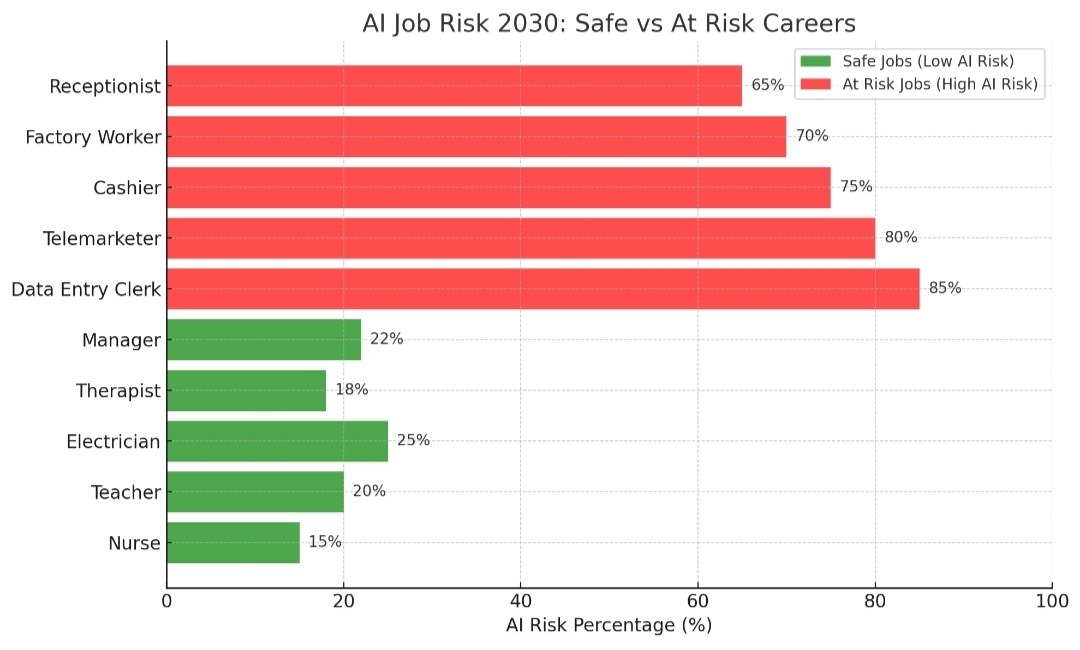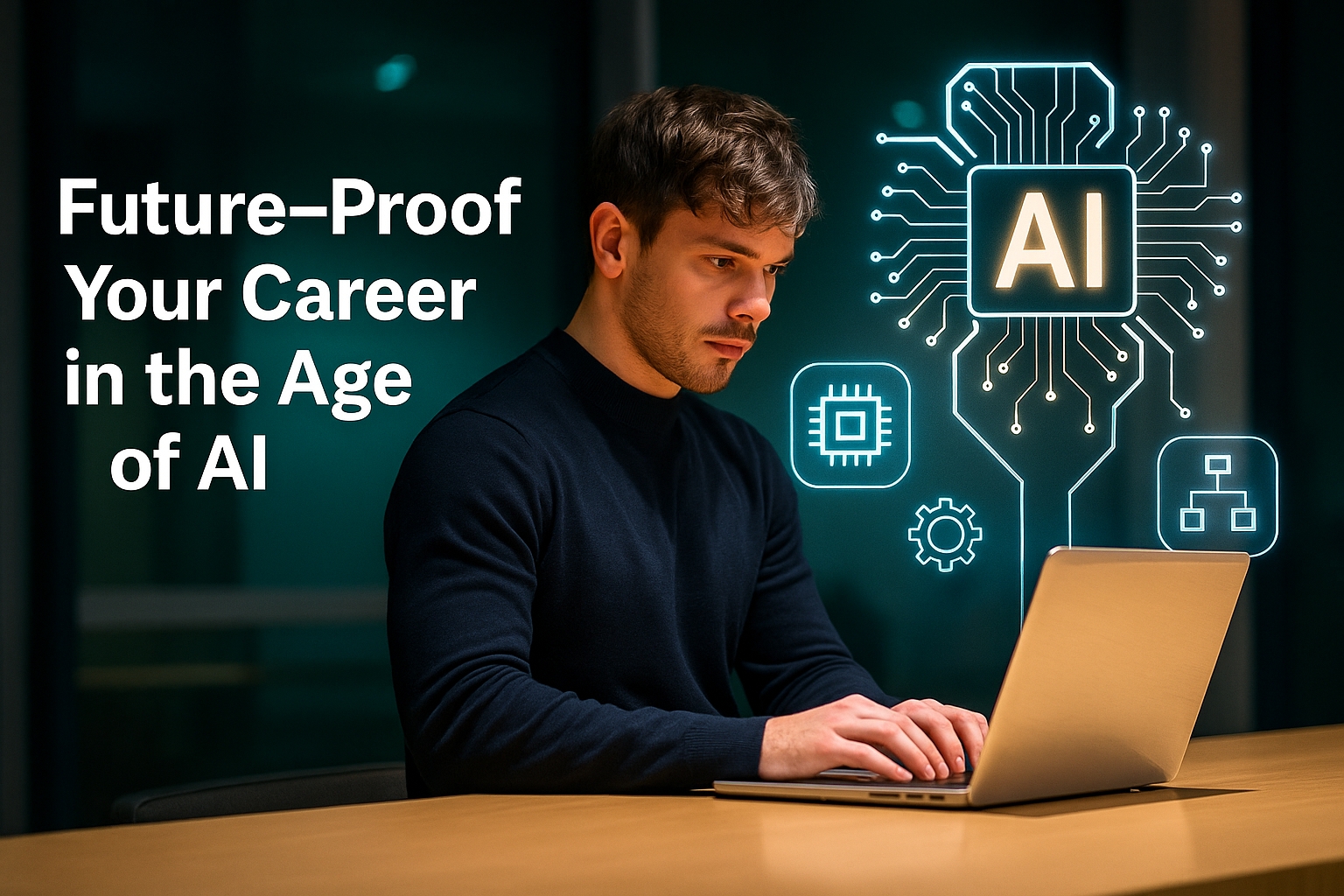A future-proof career is more important than ever as AI transforms industries and changes the skills employers demand. While some roles are becoming highly vulnerable to automation, there are also many opportunities for people who prepare in advance. The positive news is that you can secure your future by learning how to future-proof your career. In this guide, we will explore practical steps that will help you remain valuable in the workplace in 2026 and beyond. From assessing your current job’s AI risk to building human-centered skills, learning technical tools, and choosing safe career paths, this article provides a roadmap to thrive in the AI era.
Why Future-Proofing Your Career Matters in 2026 and Beyond
According to the World Economic Forum’s Future of Jobs Report 2025 (source: WEF Jobs Report), more than 40% of workers will need reskilling by 2026. This highlights the importance of building skills for future jobs and developing true career resilience to adapt to rapid AI-driven changes.
AI is moving faster than most people expected. According to global studies, millions of jobs will face disruption by 2030, especially those that rely on repetitive and predictable tasks. At the same time, new jobs will appear in technology, healthcare, education, and creative industries. Future-proofing your career is about staying ahead of these changes. It ensures that you continue to grow professionally and remain employable even as automation spreads.
Step 1: Assess Your Job Risk Before Building a Future-Proof Career
Before making any changes, the first step is to know where you stand. Some jobs, such as data entry or telemarketing, face a high chance of automation. Others, like nursing or teaching, are much safer. You can check your role using the AI Job Risk Calculator on this site. Once you understand the risk level, you will know whether to focus on upgrading skills in your current career or preparing for a transition.
Step 2: Step 2: Build Transferable Human Skills for a Future-Proof Career
AI is powerful, but it cannot fully replace human qualities such as empathy, leadership, and creativity. These abilities will continue to make you valuable in any career. Focus on improving:
- Critical thinking and problem solving
- Emotional intelligence and communication
- Leadership and teamwork
- Creativity and innovation
Employers across industries are already prioritizing these skills because they complement technology instead of competing with it.
Step 3: Learn Future-Proof Technical Skills
While human skills are essential, you should also develop a comfort level with technology. You do not need to become a programmer, but you should learn how to use modern digital tools.
Adding digital skills will strengthen your future-proof career and make you adaptable. Some of the most useful skills to consider include:
- Data literacy and analytics
- AI and automation tools for your industry
- Digital communication platforms
- Basic cybersecurity awareness
By blending human and technical skills, you increase your ability to adapt to different roles and industries. For further details, you can explore our article on Top 5 Future-Proof Skills to Learn.
Step 4: Explore Safe Career Paths for 2030
Research from LinkedIn’s Global Skills Report 2025 (source: LinkedIn Report) shows that demand for healthcare, teaching, and green energy roles is rising worldwide. These are considered AI safe jobs in 2026, offering long-term stability and strong career growth.
Certain careers are naturally less vulnerable to AI because they rely on physical presence, human judgment, or emotional care. Some of the jobs expected to remain safe include:
- Healthcare professionals (doctors, nurses, therapists)
- Teachers and educators
- Skilled trades (electricians, plumbers, mechanics)
- Creative professionals (writers, designers, artists)
- Leadership and management roles

For a complete list, see our article on Top 10 Jobs Safe from AI in 2030 to build a future-proof career. Choosing one of these paths or aligning your current role with them will give you long-term stability.
Step 5: Stay Agile with Continuous Learning for a Future-Proof Career
The workplace of the future will reward those who can keep learning. Continuous education does not always mean a degree; it can be short courses, certifications, or even self-study online. Continuous learning is essential for anyone who wants a future-proof career. Some steps to stay agile include:
- Taking regular online courses through platforms like Coursera or LinkedIn Learning
- Attending workshops or webinars in your industry
- Building a professional network on LinkedIn or through local communities
- Staying updated with industry news and reports
Networking will also expose you to new opportunities and help you understand which skills are becoming more valuable.
Conclusion: Thriving in the AI Era, Not Just Surviving
AI is not the end of human work but the beginning of a new chapter in how we contribute value. By assessing your risk, building transferable human skills, learning technical tools, exploring safe jobs, and committing to lifelong learning, you can build a truly future-proof career. The future belongs to those who prepare for it today.
The path to a secure future is not only about avoiding automation but also about embracing new opportunities. By strengthening both technical and human skills, professionals can build lasting career resilience that protects them from uncertainty. With the right actions today, you can thrive in 2026 and beyond, no matter how fast AI evolves.
Try our AI Job Risk Calculator to see how safe your career is from automation.
Frequently Asked Questions (FAQ)
Q1. What does it mean to future-proof your career?
Future-proofing your career means preparing for technological change by developing human skills, learning new technologies, and choosing roles that are harder to automate.
Q2. Which skills should I learn to stay safe from AI in 2026?
Skills such as critical thinking, emotional intelligence, creativity, leadership, and data literacy will remain important. Combining these human and technical skills makes your career more secure.
Q3. What jobs are least likely to be replaced by AI?
Healthcare roles, teaching, skilled trades, creative work, and leadership positions are among the safest. These jobs require judgment, empathy, or physical work that AI cannot easily perform.
Q4. How can I know if my current job is at risk from AI?
You can use the AI Job Risk Calculator on this site to estimate your job’s AI risk level and see suggestions for next steps.

